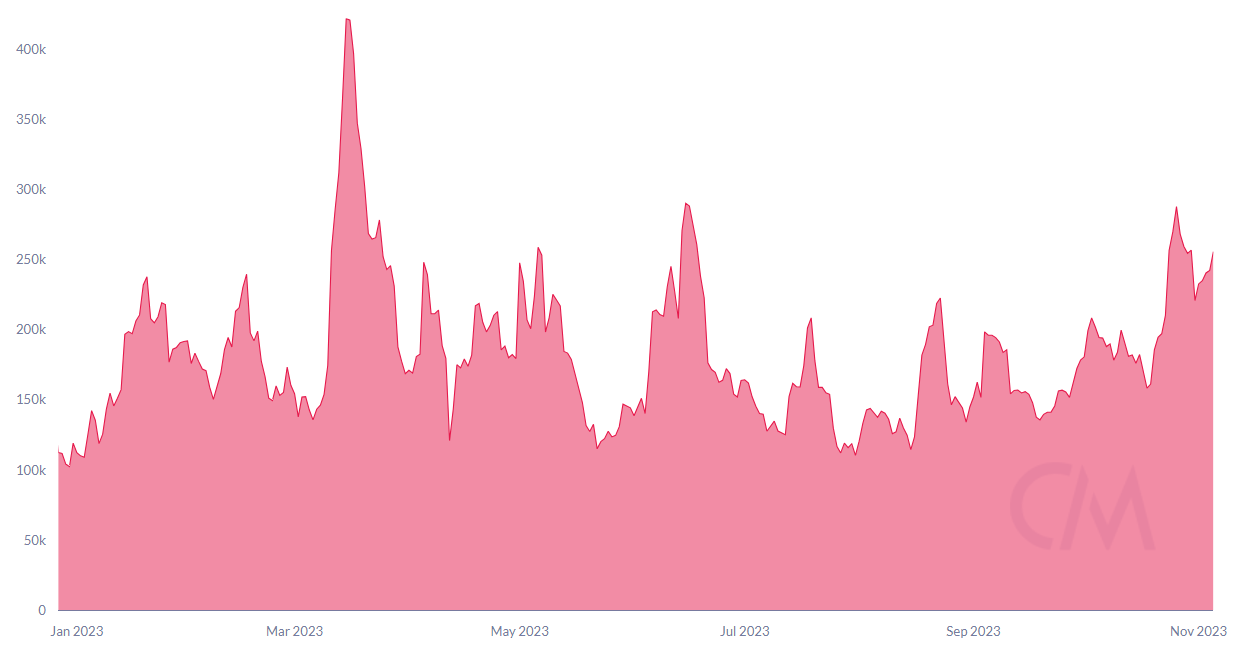Ether (ETH) price surged by 6.2% from Nov. 3 to Nov. 5, but the altcoin faces difficulty in breaking the $1,900 resistance. Despite the current bullish trend, Ether’s 17% return over the last 30 days falls short of Bitcoin’s (BTC) impressive 27% gain during the same period.
Regulatory hurdles and ecosystem centralization critiques linger
Analysts attribute some of Ether’s underperformance to uncertainty surrounding Consensys, a key player in the Ethereum ecosystem. Former employees have filed a lawsuit against the company and its co-founder, Joseph Lubin. Over two dozen shareholders of the Swiss-based holding company, Consensys AG, claim that Lubin, who is also a co-founder of Ethereum, violated a “no-dilution promise” made in 2015.
Consensys is responsible for developing and hosting infrastructure projects crucial to the Ethereum network. It was founded in October 2014, about nine months before the Ethereum blockchain launched in mid-2015. Furthermore, the High Court of Zug in Switzerland ruled in favor of the plaintiffs, exacerbating the current uncertainty.
Regulatory challenges have hampered the growth of the Ethereum ecosystem. The latest concern centers around PayPal’s U.S. dollar-pegged stablecoin, PYUSD, which operates on the Ethereum network. This token is designed for digital payments and Web3 applications. On November 2, PayPal disclosed a subpoena it received from the U.S. Securities and Exchange Commission (SEC).
In addition to regulatory pressures, there has been notable criticism of the decentralization of financial applications (DeFi) within the Ethereum network. Chainlink, a preferred solution for oracle services, quietly reduced the number of participants in its multi-signature wallet from 4-out-of-9 to 4-out-of-8. Analysts have highlighted the lack of governance by regular users as a significant issue.
Ether’s underperformance to altcoins is an evidence of other issues
Several major altcoins, including Solana (SOL), XRP and Cardano (ADA) have outperformed Ether with returns of 75.5%, 37%, and 35% in the last 30 days, respectively. This discrepancy suggests that the factors holding back ETH are not solely related to regulatory pressure or reduced demand for DeFi and NFT markets.
One pressing issue for the Ethereum network is the high gas fees associated with transactions, including those executed by smart contracts. The latest 7-day average transaction fee was $4.90, negatively impacting the usage of decentralized applications (DApps).
Moreover, the total deposits on the Ethereum network, measured in Ether, have dropped to their lowest levels since August 2020. It’s essential to note that this analysis does not consider the effects of native Ethereum staking.
According to DefiLlama data, Ethereum DApps had a total value locked (TVL) of 12.7 million ETH on November 5, down 4% from the 13.2 million ETH two months earlier. In comparison, TVL on the Tron network increased by 13% during the same period, while Arbitrum deposits remained at 1 million ETH. Data on DApps activity on the Ethereum network supports the notion of reduced activity.

Even excluding the significant 60% decline in the Uniswap NFT Aggregator, the average number of active addresses across the top Ethereum network DApps decreased by 3% compared to the previous month. In contrast, Solana’s top applications saw an average 18% increase in active users during the same period, according to DappRadar data.
Related: Aave pauses several markets after reports of feature issue
Finally, on-chain activity indicates increased user deposits of ETH at exchanges. While this data doesn’t necessarily signal short-term selling, the mere availability of coins is typically viewed as a precautionary measure by analysts.

The present daily ETH deposit average of 255,614 represents a 30% increase from two weeks earlier, indicating that holders are more inclined to sell as Ether’s price approaches $1,900.
The data suggests that reduced TVL, declining DApps activity and a higher rate of ETH exchange deposits are negatively impacting the likelihood of Ether breaking the $1,900 resistance. The price level could be more challenging than initially expected and for now, Ether bears can take a breath.
This article is for general information purposes and is not intended to be and should not be taken as legal or investment advice. The views, thoughts, and opinions expressed here are the author’s alone and do not necessarily reflect or represent the views and opinions of Cointelegraph.



